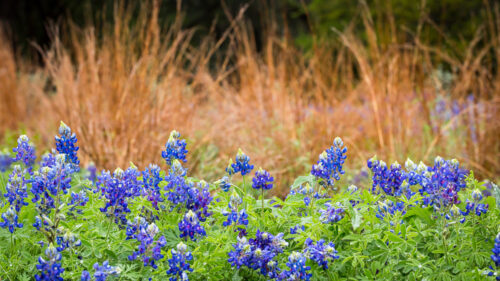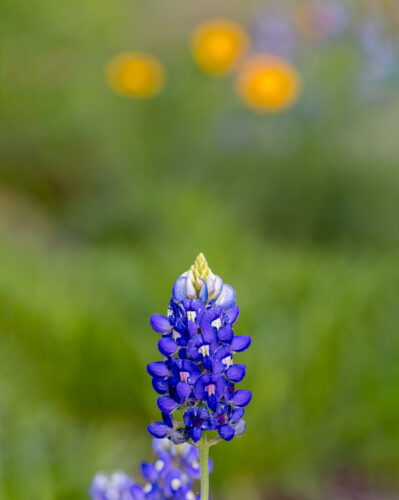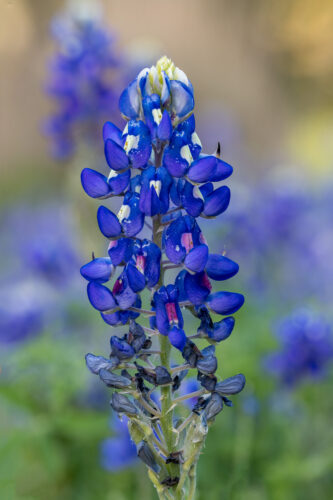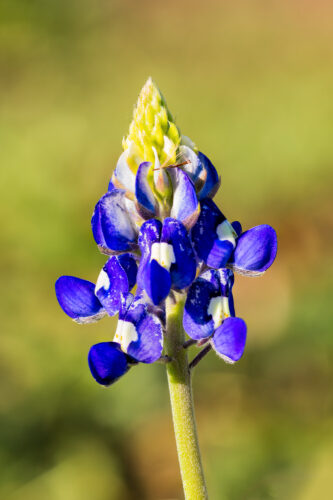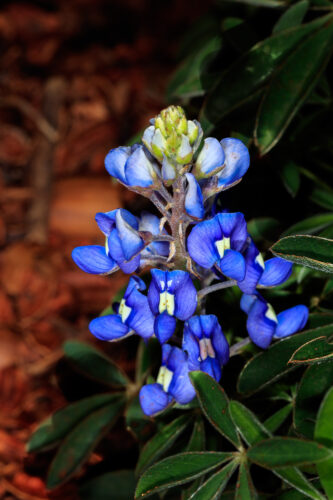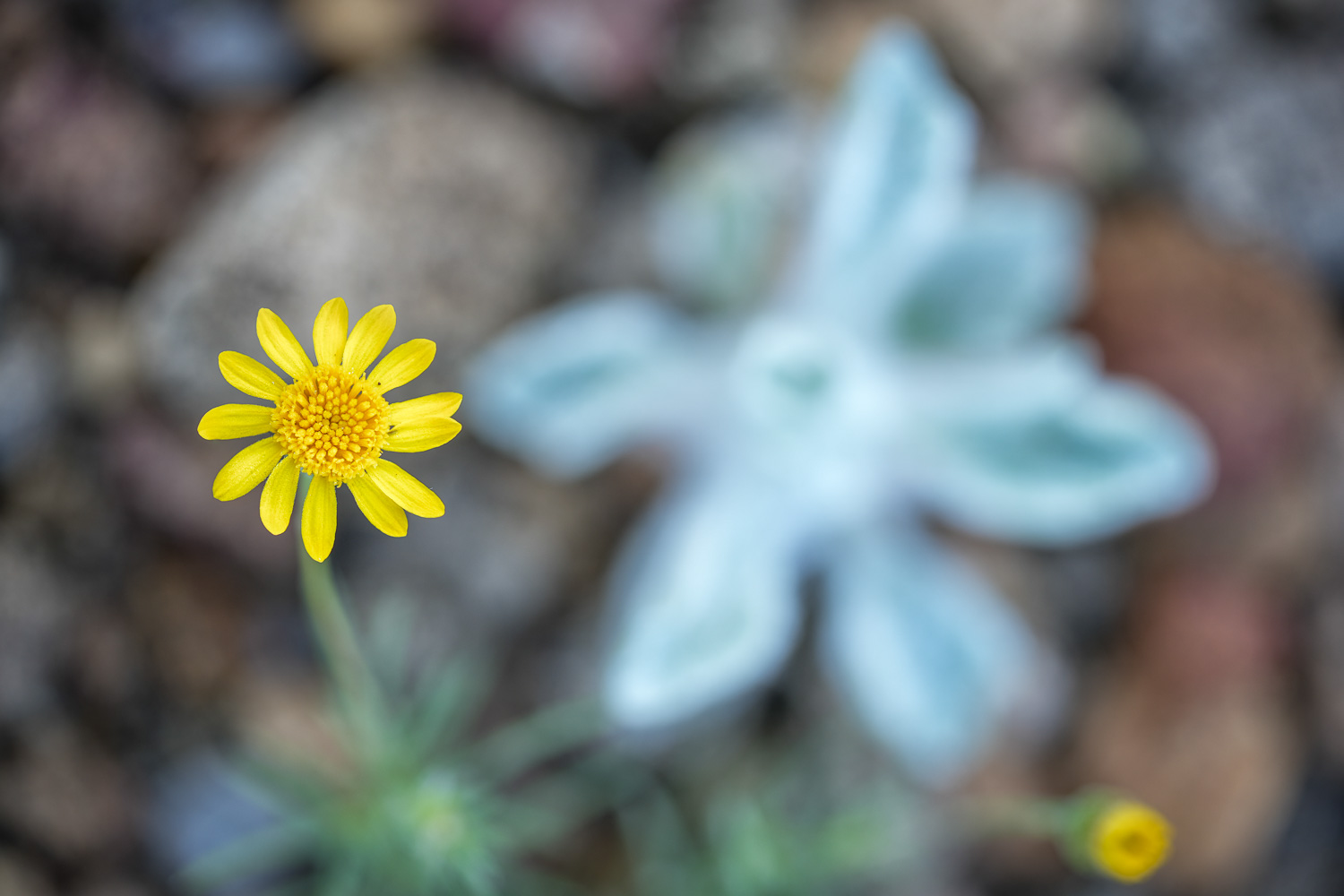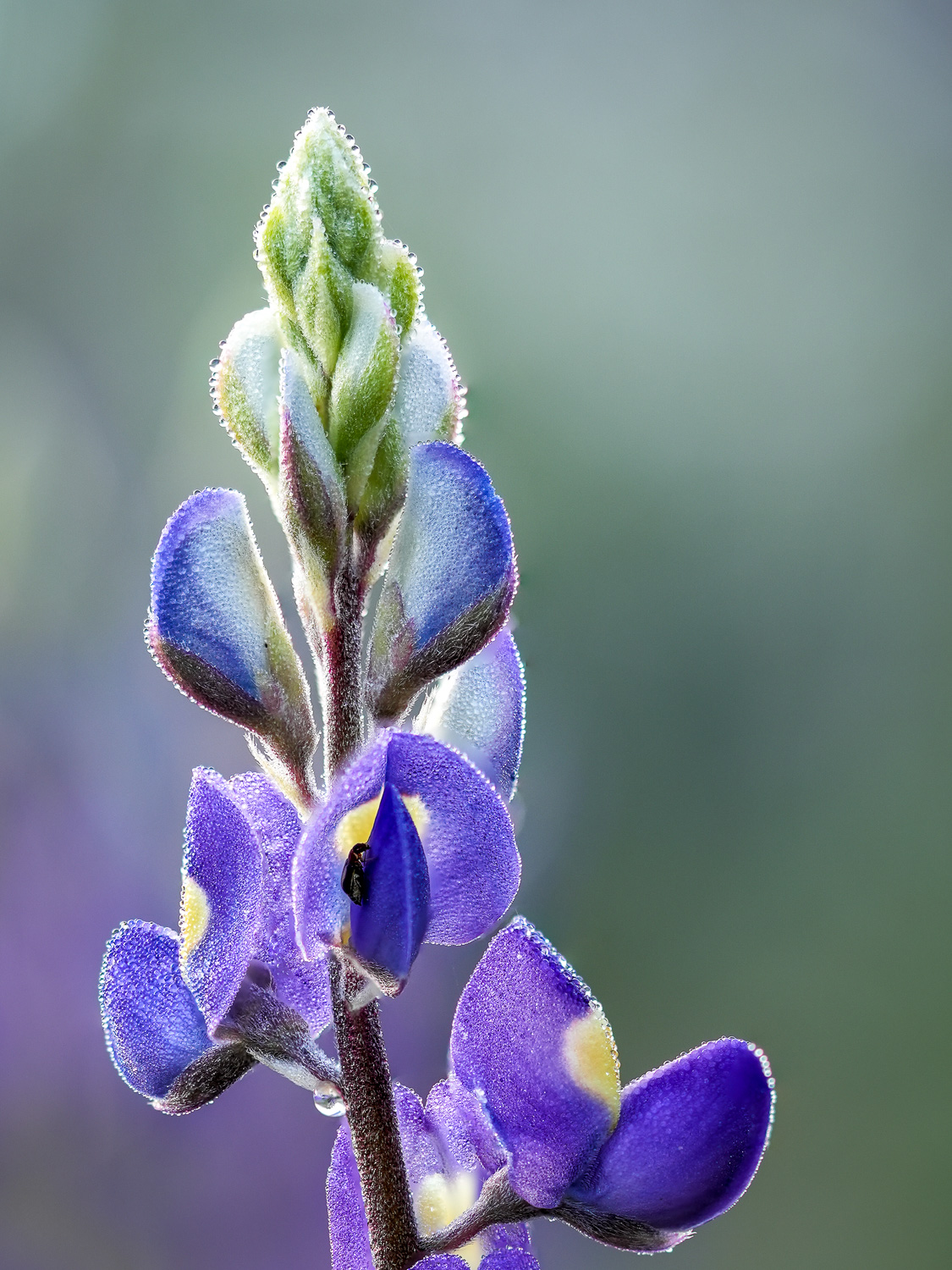Texas Bluebonnet (Lupinus texensis)
Description: Texas lupine has larger, more sharply pointed leaves and more numerous flower heads than similar lupines. Light-green, velvety, palmately compound leaves (usually five leaflets) are born from branching, 6-18 in. stems. These stems are topped by clusters of up to 50 fragrant, blue, pea-like flowers. The tip of the cluster is conspicuously white.
This is the species often planted by highway departments and garden clubs and is one of the six Lupinus species which are the state flower of Texas.
Family: Fabaceae
Synonym(s): Texas bluebonnet, Bluebonnet, Texas lupine, Buffalo clover, Wolf flower
USDA Symbol: LUTE
Duration: Annual
Habit: Herb
Size Class: 1-3 ft.
Bloom Color: White, Blue
Bloom Time: Mar, Apr, May
Water Use: Low
Light Requirements: Sun
Soil Moisture: Dry
Bloom Notes: Not only does the state flower of Texas bloom oceans of blue, but this famous wildflower forms attractive rosettes in winter. This is the species often used by highway departments and garden clubs. If planting this species in areas where it has not formerly grown, it may be helpful to inoculate the soil with a rhizobium (soil-borne bacteria which form nitrogen-rich root nodules) for lupines.
Missing Images: Plant, Leaf, Flower
Data Completeness:
ATTRIBUTION: All of the Texas Wildflower images in this post are copyrighted and are the exclusive property of Terry B. Kahler. Reproduction without explicit written consent is prohibited. Some of the information contained in this section was taken from the Lady Bird Johnson Wildflower Center website and is being used under their terms of use. Redistribution from this site is prohibited. Additional information contained in this section was taken from the USDA website including the USDA code.
